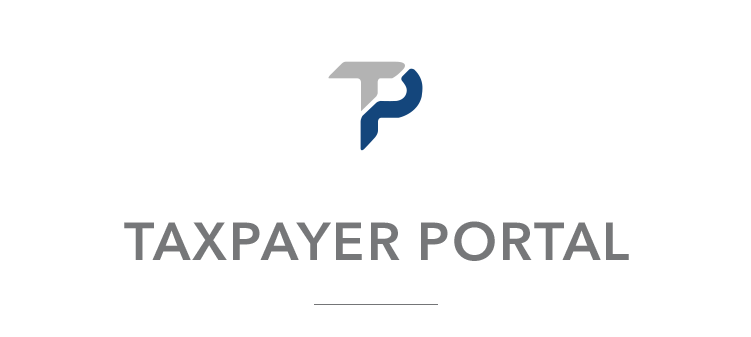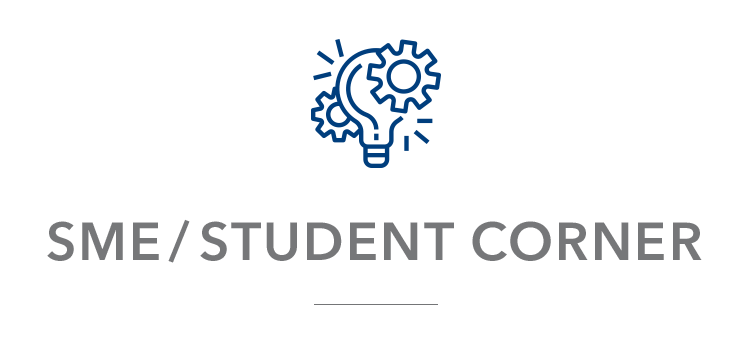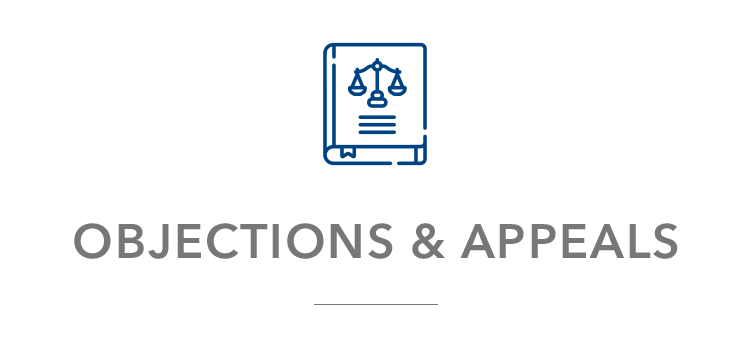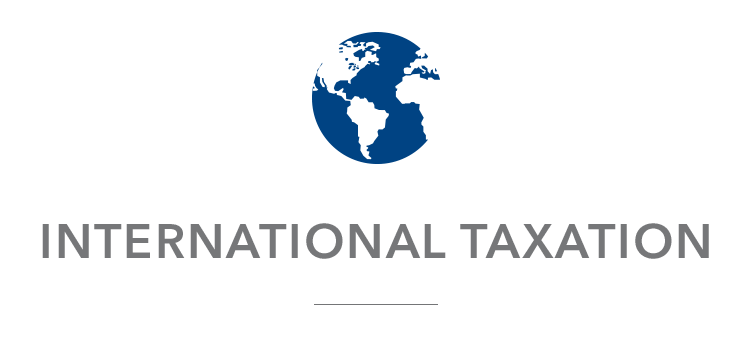Tariff Information
-
Correlation Tables for Harmonised System for the Classification of goods - Version 2017
-
Practice Notes on Classification
-
Classification of Softeners used for treating textiles of heading 38.09 (30.06.21)
-
To clarify the term “hinged containers” as it appears in Chapter 39 (30.06.21)
-
Classification of COVID-19 Home Self Testing Kit of Headings 30.02 and 38.22 (19.04.21)
-
Classification of lorries and pick up type vehicles (27.09.2019)
-
Complex Classification Cases
Motor Vehicles
-
Rate of excise duty and taxes on motor vehicles
-
Motor Cars
The rates of excise duty and taxes on motor vehicles (motor cars including motor vehicles equipped with up to 10 seats including the driver) are as follows:
Type of motor car and cylinder capacity (c.c.) Rate of Excise Duty VAT Internal Combustion Engine (Petrol or Diesel) Up to 550 c.c. 0% 15% 551 - 1,000 c.c. 20% 15% 1,001 - 1,600 c.c. 30% 15% 1,601 - 2,000 c.c. 40%
15% Above 2,000 c.c. 55% 15% Motor cars equipped with electric boost system 0% 15% Hybrid motor cars 0% 15% Hybrid Motor Cars capable of being charged by plugging to external source of electric power 0% 15% Electric cars 0% 15% -
Motor Cycles
The rate of Excise duty and taxes on motor cycles is as follows:
Internal Combustion Engine (Petrol or Diesel) Engine Capacity Rate of Excise Duty VAT Up to 300 cc 0% 15% Above 300 cc to 450 cc 45% 15% Above 450 cc 100% 15% Electric Motor cycles 0% 15% Hybrid Motor cycles 0% 15% -
Other Motor Vehicles
The rate of excise duty and taxes on other motor vehicles is as follows:
Rate of Excise Duty VAT Other hybrid or electric motor vehicles including Vans, Trucks and Pick-ups 0% 15%
-
-
Assessment of value for second hand motor vehicles
Users are informed that the value of second-hand vehicles attracting excise Duty are computed based on the FOB value of previously imported identical vehicles reduced by 9% for the first month of use and 1% for each subsequent month up to a maximum of 50%.
In case the value as above is not available, the Retail Market Price data in the country of exportation when new, published in guide book or other similar publications on motor vehicles approved by the Director of Customs, reduced by 5%, and 9% for the first month of use and 1% for each subsequent month up to a maximum of 50%.
The following websites and guide books have been approved for the assessment of FOB values:
-
Websites
-
Guide Books
- JAAI Silver Book – Japan Used Car Price Guide Book
- Parkers Guide Books
- Japanese Motor Vehicles Guide Books
- Glass Guide (UK)
- Auto Dealers’ Guide Book ( South Africa)
For motor vehicles imported from Japan, the FOB value can be assessed using the Online Second-Hand Vehicle Valuation System.
In case you have any difficulty in using this IT application or you need any further clarification, you may contact the Second Hand Vehicle (SHV) Unit on Tel +230 202 0500 (Ext: 7085) or by email on This email address is being protected from spambots. You need JavaScript enabled to view it..
-
-
Calculation of excise duty exempted and payable by beneficiaries of 100% excise duty exemption on a motor car of higher engine capacity
- Objective
The purpose of this guide is to assist beneficiaries of 100% excise duty exemption who opt to purchase a motor car of higher engine capacity of up to 2,250 cc over and above their entitlement on the method of calculation of the excise duty exempted and payable
NOTE:
-
For beneficiaries of partial excise duty concession (i.e. 70%) on a motor car, please refer to "Guidelines for Beneficiaries of 70% Excise Duty Concession."
-
Hybrid and electric motor cars are not subject to excise duty (zero rated) and as such excise duty concession/exemption is not applicable on such cars.
-
-
Rate of excise duty on motor cars
-
Motor cars indicated in the table below attract ad-valorem excise duty specified under Part I of the First Schedule the Excise Act.
Motor cars with an internal combustion engine (Petrol or Diesel) Rate of Excise Duty (%)
Up to 550 c.c 0 551 - 1000 c.c 20 1,001 – 1,600 c.c 30 1,601 – 2,000 c.c 40 2,001 – 2,250 c.c 55 -
Motor cars described under the respective items of Part IA of the First Schedule to the Excise Act shall be subject to the amount of concession of excise duty as specified therein, provided the conditions as laid down under the respective items are fulfilled.
-
-
Conditions for excise duty exemption
-
Beneficiaries who opt for a motor car with the same or a lower engine capacity than their present entitlement, they shall be entitled to the amount of concession as specified in Sub-Part B of the First Schedule to the Excise Act.
-
Beneficiaries who opt to purchase a car of a higher engine capacity shall pay the difference in excise duty and taxes.
-
-
Method of calculation of the excise duty exempted and payable for beneficiaries of 100% excise duty exemption who opt to purchase a motor car of higher engine capacity of up to 2,250 cc over and above his entitlement.
The amount exempted and payable is calculated as follows:
The CIF (Cost, Insurance and Freight) value for the car opted for, shall be apportioned in the ratio:
'Present entitlement engine capacity in cc' divide by 'opted engine capacity in c.c' and multiply by 'CIF of the motor car opted', hereinafter referred to as "CIF A"
CIF A = Present entitlement engine capacity in c.c / Opted engine capacity in c.c X CIF of the motor car opted
The amount of excise duty exempted on the opted engine capacity is calculated as follows:
Amount of excise duty exempted on the opted motor car = CIF A X Rate of excise duty applicable to the motor car with engine capacity as his present entitlement.
The amount excise duty payable on the opted engine capacity is calculated as follows:
Amount of excise duty payable on the opted motor car = CIF of the motor car opted X Rate of excise duty applicable to the motor car opted - Amount of excise duty exempted on the opted motor car
-
Example
An officer benefits from excise duty exemption on a motor car with an engine capacity not exceeding 1,500 cc and is entitled to an amount of exemption of 100% of the excise duty payable. He opts to buy a 2,200 c.c petrol engine motor car for a value for duty purposes of Rs 900,000.
The amount of excise duty exempted and payable shall be calculated as follows:
Apportioned CIF A
Excise duty exempted
Excise Duty payable
VAT Payable
= 1,500/2,200 X 900,000
= 613,636 X 30%
= (900,000 X 55%) – 184,091
= (900,000 + 310,909) X 15%
= Rs 613,636
= Rs 184,091
= Rs 310,909
= Rs 181,636
For any further information and assistance, you may contact the Motor Vehicle Corridor on 202 0500 Ext 7070 or 7073.
- Objective
-
Guidelines for beneficiaries of 70% excise duty concession
- Objective
The purpose of this guide is to assist beneficiaries of 70 % excise duty concession on motor cars of up to 1400cc, under the PRB Report 2021 and eligible staff managed by the Roman Catholic Education Authority and Hindu Education Authority.
Note: Please consult the guideline on "Calculation of Excise Duty Exempted and Payable by Beneficiaries of 100% Excise Duty Exemption on a Motor Car of Higher Engine Capacity" for the main features concerning the method of calculation of excise duty exempted and payable for beneficiaries of 100% excise duty exemption who opt to purchase a motor car of higher engine capacity than their present entitlement.
- Conditions for excise duty concession
-
70% excise duty concession is granted to certain grades of officers under the PRB Report 2021 and eligible staff managed by the Roman Catholic Education Authority and Hindu Education Authority. They are entitled to the amount of concession as specified in Sub-Part B of Part IA of the First Schedule to the Excise Act, provided the conditions as laid down under the respective items are fulfilled.
-
The 70 % is limited to a motor car of engine capacity of 1,400 c.c only. Officers who opt to purchase a car of a higher engine capacity than his normal entitlement subject to a maximum of 2,250 c.c shall pay the difference in excise duty and taxes.
-
Officers may opt to purchase a car of engine capacity of up to 1,200 c.c with 100% of excise duty exemption up to a maximum of Rs 200,000.
-
Officers who purchase a car of engine capacity of up to 1,200 c.c and opt for 100% of excise duty exemption up to a maximum of Rs 200,000, shall not be allowed to exercise further option to purchase a car of higher engine capacity.
-
Officers whose grades are listed in Annex II of PRB Report 2021 and officers falling under the categories of Item 21 and 22 of Sub-Part B of Part IA of the First Schedule to the Excise Act, the renewal of duty-free exemption shall be every 7 years. All other 70% excise duty concessions shall be once in a career.
-
Officers who qualify for a higher rate of excise duty exemption on a car shall, in the first instance, take advantage of the enhanced benefit and only after seven years may opt for deferred renewal for higher rate of duty exemption. The deferred renewal to purchase a duty exempted car with rate of excise duty shall be 8 years at 85% and 9 years at 100%, provided that the beneficiary has foregone his car allowance in lieu of duty exemption.
-
Officers eligible for 70% and 85% excise duty concession shall benefit from Rs 115,000 excise duty exemption, should the excise duty exemption based on 70% or 85% be less than Rs 115,000.
-
Officers who reckon not less than 5 years’ service and draw a monthly basic salary of Rs 31,000 or more and have benefitted from excise duty concession of up to Rs 150,000 on a motor car with an engine capacity not exceeding 1,400 c.c shall not be entitled to another concession under 70% on a car of engine capacity of up to 1,400 cc or 100% duty exemption on a car of engine capacity of up to 1,200 cc when they reckon at least 22 years’ service and in receipt of a monthly salary Rs 39,350 or more, and vice-versa.
-
-
Officers who have benefitted 100% or 70% duty remission on a motor car every 5 or 7 years as the case may be, may be granted full or partial exemption of excise duty and taxes on another motor vehicle, provided that-
-
the 4-year period from the date he benefitted from the exemption has not expired;
-
he pays the duty, excise duty and taxes computed proportionately by reference to the time remaining due out of the 4-year period for the exemption which was previously granted to him; and
-
the officer complies with the following conditions:-
-
he submits an application for the exemption;
-
the exemption is under the same exemption regime as that which was previously granted to him;
-
he is still eligible to benefit from that exemption; and
-
the motor car is cleared within 9 months from the date of payment of the proportionate duty, excise duty and taxes.
-
-
-
Calculation of the excise duty payable and exempted for beneficiaries of 70% excise duty concession
The amount exempted and payable is calculated as follows:
The CIF (Cost, Insurance and Freight) value for the car opted for, shall be apportioned in the ratio:
'Present entitlement engine capacity in c.c' divide by 'opted engine capacity in c.c' and multiply by 'CIF of the motor car opted', hereinafter referred to as "CIF A"
CIF A = Present entitlement engine capacity in c.c / Opted engine capacity in c.c X CIF of the motor car opted The amount of excise duty exempted on the opted engine capacity is calculated as follows:
Amount of excise duty exempted on the opted motor vehicle = CIF A X Rate of excise duty applicable to the motor vehicle with an engine capacity as his present entitlement X Applicable rate of excise duty concession The amount excise duty payable on the opted engine capacity is calculated as follows:
Amount of excise duty payable on the opted motor car = CIF of the motor car opted X Rate of excise duty applicable to the motor car opted - Amount of excise duty exempted on the opted motor car -
Example
An officer benefits from excise duty concession on a motor vehicle with an engine capacity not exceeding 1,400 cc and is entitled to an amount of concession of 70% of the excise duty payable on the motor car or Rs 115,000, whichever is higher. He opts to buy a 2,200 c.c petrol engine motor car for a value for duty purposes of Rs 900,000.
The amount of excise duty exempted and payable shall be calculated as follows:
Apportioned CIF A
Excise duty exempted
Excise Duty payable
VAT Payable
= 1,400/2,200 X 900,000
= 572,727 X 30% X 70%
= (900,000 X 55%) – 120,273
= (900,000 + 374,727) X 15%
= Rs 572,727
= Rs 120,273
= Rs 374,727
= Rs 191,209
For any further information and assistance, you may contact the Motor Vehicle Corridor on 202 0500 Ext 7073 or 7074.
- Objective
-
Guidelines for claim for negative excise duty on electric motor cars and electric goods vehicles
- General
As from 1st November 2023,
-
an individual who has purchased an imported electric motor car or electric vehicle for the transport of goods; or
-
a non-individual who has purchased an imported electric motor car or electric motor vehicle for the transport of goods of up to a maximum power of 180 kilowatt, may make a claim to the Director-General for an amount of 200,000 rupees to be paid to him.
-
-
Types of electric motor cars and electric goods vehicles concerned
-
HS Codes of electric motor cars and electric vehicles for the transport of goods falling under the measure at paragraph 5(a)(i) are listed as follows:
-
Electric motor cars:
8703.80.11, 8703.80.12, 8703.80.91 or 8703.80.92.
-
Electric vehicles for the transport of goods:
8704.60.11, 8704.60.12, 8704.60.13, 8704.60.14, 8704.60.15, 8704.60.16, 8704.60.17, 8704.60.18, 8704.60.21, 8704.60.22, 8704.60.23, 8704.60.24, 8704.60.31, 8704.60.32, 8704.60.33, 8704.60.34, 8704.60.35, 8704.60.41, 8704.60.42, 8704.60.43, 8704.60.44, 8704.60.45, 8704.60.51, 8704.60.52, 8704.60.61 or 8704.60.62.
-
-
HS Codes of electric motor cars and electric vehicles for the transport goods falling under the measure at paragraph 5(a)(ii) are as follows:
-
Electric motor car with a maximum power rating not exceeding 180 kw:
8703.80.11, 8703.80.91
-
Electric goods vehicle with a power rating not exceeding 180 kw:
8704.60.11, 8704.60.13, 8704.60.15, 8704.60.17, 8704.60.21, 8704.60.22, 8704.60.23, 8704.60.24, 8704.60.31, 8704.60.33, 8704.60.35, 8704.60.41, 8704.60.43, 8704.60.45, 8704.60.51, 8704.60.52, 8704.60.61 or 8704.60.62
-
-
-
Requirements to be fulfilled by an applicant for the claim
-
An individual or a non-individual entitled to make a claim for negative excise duty shall make an application in the approved form MRA/CUS/ASS/MVC/FORM 3, which can be downloaded from the MRA website on the following link: https://www.mra.mu/download/NegativeExciseDutyRev2.pdf
-
The application shall be submitted to MRA Customs not later than 30 days from the date of purchase of the electric motor car or electric goods vehicle;
"Date of purchase" means the date on which a deed of sale has been registered with the Registrar General’s Department with respect to an electric motor car or electric motor vehicle for the transport of goods, as the case may be, which has been purchased by an individual.
-
One application shall be made for each electric motor car or electric motor vehicle for the transport of goods purchased;
-
The following documents to be submitted together with his application:
-
Copy of National Identity Card / Passport;
-
In case of an application by a non-individual, copy of National Identity Card / Passport of its representative;
-
Bank statement showing account number and name of applicant;
-
Copy of deed of sale which have been duly registered with the Registrar-General’s Department with respect to the electric motor car or the electric vehicle for the transport of goods ;
-
Copy of bill of entry (if any); and
-
Any other document that may be required;
-
-
The duly filled form, together with all documents, must be submitted by e-mail on address This email address is being protected from spambots. You need JavaScript enabled to view it.; and
-
Any application will be considered null and void in case the applicant fails to submit any of the required documents within 15 days from the date of the application.
-
-
For any further information and assistance, you may contact the Motor Vehicle Corridor on 202 0500 Ext 7070 or 7073.
- General
Export
Exportation is among the key elements which determine the level of economic activity of a country. Customs plays an important role in securing, monitoring and facilitating exports and it also provides data for statistical purposes. In Mauritius there are two main exporting points which are the Airport and the Port. In this part we will go through important information which stakeholders (exporters, declarants and members of the public) need to know while undertaking export activities.
Customs Requirements
- Export Permit
For controlled goods, you will be required to submit the export permit applications to the competent authorities for processing and approval prior to exportation.
- Export Entries
Export entries and other clearances are a legal declaration to Customs under the Customs Act 1988, providing details of shipments to be exported.
Customs suggests that you hire the services of a freight forwarding agent or a Customs broker to lodge export declarations on your behalf. This will help if you are unfamiliar with compiling entries, the related rules, determining tariff classification, customs value, or whether permit are required for goods you wish to export.
Penalty exists for erroneous export entries under the Customs Act 1988.
- Submission of Declaration
All entries must be submitted and processed prior to goods being authorised access to the port area or export warehouses at airport.
The following goods are exempted from the requirement to lodge an export declaration / bill of entry, but may still be subject to a prohibition / restriction which must be complied with:
-
Corpse and human remains
-
Goods covered by ATA Carnet
-
Parcels and packets and bona fide trade samples, not being merchandise for sale, exported by post or courier
Note: Accompanied personal effects (excluding merchandise for sale) are exempt from the submission of customs declaration.
The information on your export declaration is vital. This enables Customs to assess the level of risk and decide whether we need to examine any consignment prior to shipment.
Customs declaration must be lodged prior to the goods being loaded for export. For export by seafreight, containers (general cargo) to be exported should reach the container terminal 48 hours before the expected date of departure of the vessel (for reefer containers and dangerous goods the time frame is 24 hours). For export by airfreight, goods should reach the export shed 4 hours (minimum) before take-off of respective planes. Our Customs Management System is able to screen an electronic export entry and provide either of the following status:
- shipment allowed
- examination required or
- scanning.
The export section at the airport works from 08 45 hrs to 20 00 hrs from Mondays to Fridays and 09 30 hrs to 20 00 hrs on Saturdays. For Sundays and Public Holidays, the officers may work upon request from stakeholders.
For the port export entries can be cleared for shipment until 20 00 hrs.
However, if exporters lodge an entry less than 48 hours prior to loading for seafreight, or less than four hours prior for airfreight, the goods may not be cleared in time for the scheduled voyage or flight (due to processing time and/or if examination is required).
The exporter is responsible for:
-
making an accurate and correct Customs entry
-
keeping all commercial documents for a period of atleast five years and producing this documentation to Customs when required
-
compliance with all legislative requirements.
Where an exporter uses the services of a Customs broker or freight forwarding agent in the clearance of goods through Customs, any declaration or action undertaken by the broker or freight forwarding agent in this process is deemed also to have been made by the exporter. The exporter may also be liable for any or all penalties that are incurred by the broker or freight forwarding agent in this clearance process. Under Customs legislation, actions by the broker or freight forwarding agent in the clearance process are regarded as being attributable to the exporter.
Visiting Crafts - General Information
Mauritius is visited by various crafts (aircrafts and marine vessels) ranging from commercial crafts to pleasure crafts. These can be listed below:
- Cargo Aircrafts
- Passenger Aircrafts
- Private Jets
- Container Vessels
- General Cargo Carriers
- Dry Bulk Carriers
- Tankers (Liquid Carriers)
- Fishing Vessels
- Cruise Vessels
- Yacht
During the last 10 years our International Trade has increased exponentially and so has the influx of passengers visiting Mauritius.
To be able to control this ever increasing traffic of passengers and cargo, Customs has set up some procedures which ultimately help in facilitating legitimate trade and bona fide passengers and at the same time enforce more strict control over illegitimate trade and suspected passengers.
This section will give you an overview of procedures required for visiting crafts.
Import
Customs Formalities & Procedures For Clearance of Goods
-
The importation of any goods requires the importer to complete Customs Formalities. These formalities include the submission of a Customs Declaration, commonly known as the Bill of Entry (BOE), electronically through the TradeNet giving all details of the goods imported, such as the quantity, value and precise nature of the goods (description of goods with specifications such as Model no, Ref no, Brand , Country of origin, etc) and the amount of Customs Duty & taxes (if any) to be paid.
-
In addition to the BOE (Customs Declaration), trade documents such as invoices, bills of lading (Packing list , Certificate of Origin) , permits or other documents accompanying the import (consignment) should also be scanned and submitted electronically.
-
Once submitted the customs declaration is validated by customs (Customs Management System and BOE no is allotted to that Declaration) and a message is sent back (a Customs Response is sent to the declarant informing that the Customs Declaration has been accepted at Customs) to the declarant and payment of customs charges (duty & taxes), if any, is effected.
-
The BOE is then processed at the Compliance Section whereby after checking the documents, the compliance officer may:
-
Release the goods.
-
Require clarifications about documents submitted (Put the BOE under query if any additional information is required).
-
Withhold delivery of goods if any until necessary clearance by other Govt agencies e.g Health Dept, M.O.A etc or approval of any exemption is fulfilled
-
Send BOE to Valuation unit for confirmation of declared value.
-
Send the declaration for verification (by an Examining Officer).
- Send the Consignment for scanning.
-
-
If any discrepancy resulting in short payment of C/duty & taxes is noted during review ,the BOE is amended and additional amount of duty and taxes together with applicable penalty brought to account.
-
Where an importer is not agreeable to pay any additional amount of duty and taxes, he may object to the demand within 28 days of the date of demand.
-
The consignment may be released automatically by CMS.
-
Other Units such as BDM or CANS may select the consignment for 100% verification.
-
An importer can file (process) the Customs declaration provided he is registered at Customs as a declarant and is owner of the Front End System of the Trade Net. However, due to the technicalities of the declaration, importers prefer to hire the services of a licensed Customs House Broker or a Freight Forwarding Agent.
-
Customs may at any time (at Post Control Level) (after checking the documents and/or after verification) require the importer to pay additional customs charges and/or penalties if customs offences are detected (In some cases Customs offences are referred to Police for prosecution). Severe customs offences may even lead to the seizure of the goods.
-
In case of goods suspected to be proceeds of Money Laundering/ Terrorist Financing, an investigation is carried out prior to referral to competent authorities such as the ICAC and/or the Police Counter Terrorism Unit, as the case may be, for further investigation.

























